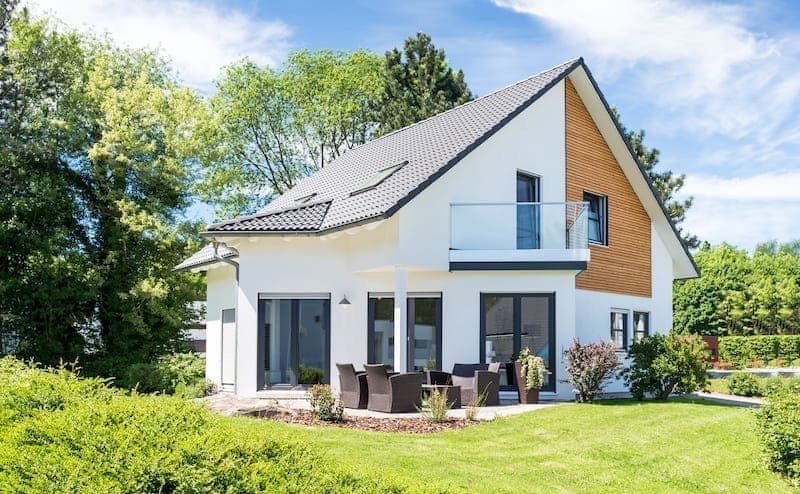To understand what a variance is in real estate, you’ll first need to understand the concept of zoning. Without knowing what zoning means and why certain laws pertaining to zoning exist, you won’t be able to fully understand how a variance works in real estate and why you might need to get one.
Let’s take a look at the basics of zoning and then move on to what variance in real estate is, how to request this, and the different types of variances.
Zoning Overview
You may notice as you drive around your town that similar buildings tend to be grouped together. Perhaps a certain section is dedicated to factories while another is primarily restaurants, stores and other businesses. You probably aren’t likely to find a strip mall in the middle of a residential neighborhood or a factory squeezed between a coffee shop and a bakery. This is a result of zoning – the laws that allow local governments to regulate which areas of your city can have real estate and the kind of real estate they can have.
You may ask, “What are the categories of zoning?” Well, among the most common classifications are residential, commercial, agricultural and industrial zones. It can get more specific from there, but these are the broad categories most commonly used to define the types of real estate that can exist in various parts of a city or town.
Benefits Of Zoning Laws
It’s easy to see the benefits of zoning, which include keeping residential neighborhoods full of homes instead of plopping a noisy factory in the middle of your quiet and peaceful cul-de-sac.
In addition to convenience and preference, zoning helps protect home values. Having houses as your neighboring buildings is more likely to keep the price of homes in the area strong. Deciding how private property can be used through zoning can make a huge difference in the overall desirability of a municipality.
Sometimes, though, property owners may want to deviate from zoning laws for a variety of reasons. If that’s you, it may be time to seek a variance.
See What You Qualify For
Buy A Home
Discover mortgage options that fit your unique financial needs.

Refinance
Refinance your mortgage to have more money for what matters.
Tap Into Equity
Use your home’s equity and unlock cash to achieve your goals.
What Is A Variance In Real Estate?
If zoning laws and your vision for your property don’t quite see eye to eye, there’s still hope. It will, however, require an application for a variance or a special permit from your municipality’s zoning authority.
Essentially, a property owner requests a variance when their planned use of their property deviates from local zoning laws designed to protect property values. If granted, a variance acts as a waiver to some aspect of the zoning law or regulations.
Types Of Variance In Real Estate
Although you might request a property variance for multiple reasons, we’ll touch on the two types of variance in real estate that are the most common. They are area variance and use variance.
- Area variance: An area variance allows you to make physical changes to your property that zoning requirements otherwise wouldn’t permit. Typically requested by homeowners, an area variance is the most popular type of variance. For an example of a situation involving area variance, let’s say you’re buying a house and want to put up a fence. Here, an area variance – if granted – would allow you to erect the fence where it’s usually not permitted.
- Use variance: Typically requested by real estate investors and developers, a use variance – if signed off on – also allows you to use a property in a way that zoning requirements don’t normally allow. For example, a use variance may let you open a commercial property in a residential area, or it may give you permission to renovate a single-family home into a multifamily home.
In most cases, an area variance is easier to obtain than a use variance.
How Do I Get A Variance In Real Estate?
As with most bureaucratic endeavors, local rules will vary from municipality to municipality, but the process of getting a variance generally begins with a variance letter. You, as the property owner, can write this letter or have your attorney do it. When undertaking a process like this, it’s always a good idea to talk with an attorney about strategies as well as local rules and regulations.
The letter should explain exactly what you want to do on the property and why you’ll need a variance to the zoning laws to complete your project.
Once the local zoning authority receives the letter, they’ll notify neighbors or other community stakeholders who might be affected by the grant of a variance. Once that’s complete, a hearing is scheduled for the homeowner to present evidence on behalf of the variance request.
Anyone opposing the zoning change will also get to express their concerns at the hearing, and the zoning authority then votes on the question of whether a variance should be granted – taking into account not only testimony but the effects the variance might have on home values, the neighborhood’s appeal, traffic, noise and more.
If your request is denied, you can usually begin to undertake an appeal process. This process can vary greatly, though, depending on the municipality, so be sure to find the exact process for submitting a variance in your area.
Variance Real Estate FAQs
With any process involving local governments and rules that vary by municipality, questions are likely to arise.
Let’s take a look at a few of the most common ones.
Does a property variance transfer to the next owner?
If a variance has been vested, meaning it’s been acted upon, it’ll stay with the property to prevent a future charge against the new owner for violating a zoning regulation. However, if the variance hasn’t been acted on, a new homeowner isn’t guaranteed to be granted the same variance.
If I get the variance, am I obligated to make the change?
No, you’re not obligated unless you want to make sure it’s vested with the property. Getting a variance in no way requires you to make the change you requested, but it means you’re allowed to. It’s important to note that there’s no penalty for not using the variance.
Does a variance expire?
While you aren’t obligated to make the changes you ask for when you receive a variance, the amount of time you have the option to make these changes can vary. When your variance gets approved, it may or may not have an expiration date. This requires you to make the change you’ve been granted within a year or some other specified time period.
Variances often have an expiration date simply because zoning decisions are time-sensitive and apply to the current state of the area indicated. That said, remember that once a variance is vested, it remains – even if the zoning preferences and laws of the community change over time.
To avoid letting your variance expire, make sure you’re ready – from both a financial and emotional perspective – to undertake the project before you ask for permission to get the ball rolling.
The Bottom Line: Variances Can Help Soften Zoning Regulations
Zoning laws can feel like tough restrictions to private landowners, but they often play an important role in creating great communities. However, if the zoning rules in your town or city don’t mesh with what you have planned for your home, there’s still hope for a resolution.
Variances provide an opportunity for you to reach your goals for the land you own, without changing or defying the zoning of an entire area.
Looking to make some improvements to your home and need a variance?

Victoria Araj
Victoria Araj is a Staff Writer for Rocket Companies who has held roles in mortgage banking, public relations and more in her 15-plus years of experience. She has a bachelor’s degree in journalism with an emphasis in political science from Michigan State University, and a master’s degree in public administration from the University of Michigan.












